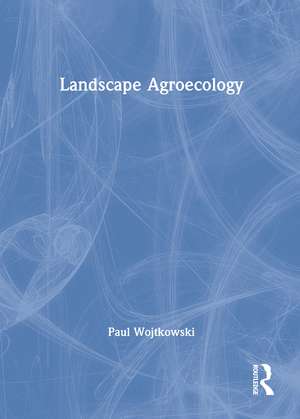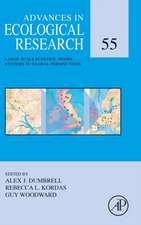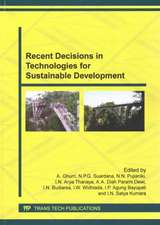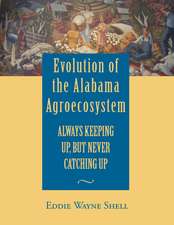Landscape Agroecology
Autor Paul Wojtkowskien Limba Engleză Paperback – 12 dec 2003
Examining the concepts, conventions, and components that underlie the ecology of human-managed landscapes, this is the first book to address landscape agroecology. Incorporating ideas from agroecology, forestry, agronomy, agroforestry, landscape ecology, and environmental science, Landscape Agroecology is a comprehensive look at a cutting-edge topic.
From the author: “Farm or forestry landscapes can be designed to address any number of objectives. Commonly, the focus is entirely on production with few, if any, secondary goals. These landscapes typically achieve their purpose but are not entirely in harmony with nature. Landscape agroecology offers the same potential for productivity, but also focuses on sustainability and environmental friendliness as strong secondary objectives.”
While the idea of formulating landscapes for specific purposes is comparatively new, countless examples exist where landscape modifications have been made to inhospitable areas in order to overcome the natural obstacles that hamper crop growth. This book illuminates the principles behind these triumphs, bringing this local knowledge into the mainstream.
Landscape Agroecology will familiarize you with the concepts and terminology needed to understand this exciting new field:
- complementarity—usually defined in terms of plant-plant growth—expanded to include the rural countryside
- desirable agroecosystems properties—what an agroecosystem needs in order to overcome landscape stresses such as drought, flooding, insect infestation, etc.
- agrotechnologies—the classification of agroecosystems based on visual characteristics and the land-use problems addressed
- cultural agroecology—what we can learn from the superior land-use techniques of various societies and cultures, and how these ideas can be brought into the mainstream
- cultural motif—culturally related land-use patterns that are openly manifested in the landscape
Preț: 327.58 lei
Preț vechi: 387.91 lei
-16% Nou
Puncte Express: 491
Preț estimativ în valută:
62.70€ • 68.13$ • 52.70£
62.70€ • 68.13$ • 52.70£
Carte tipărită la comandă
Livrare economică 21 aprilie-05 mai
Preluare comenzi: 021 569.72.76
Specificații
ISBN-13: 9781560222538
ISBN-10: 1560222530
Pagini: 338
Dimensiuni: 152 x 212 x 23 mm
Greutate: 0.56 kg
Ediția:1
Editura: CRC Press
Colecția CRC Press
ISBN-10: 1560222530
Pagini: 338
Dimensiuni: 152 x 212 x 23 mm
Greutate: 0.56 kg
Ediția:1
Editura: CRC Press
Colecția CRC Press
Public țintă
UndergraduateCuprins
Preface , Chapter 1. Introduction , Land-Use Patterns , The Field of Landscape Agroecology , Concepts of Land Use , Perspectives on Agroecology , Chapter 2. Underlying Agroecological Concepts , Essential Resource Management , Complementarity , Primary and Secondary Species , Desirable Plant Characteristics , Biodiversity and Agrobiodiversity , Desirable Agroecosystem Properties , Land Use Intensity , Interagroecosystem Effects , Chapter 3. The Agrotechnologies , Basic Concepts , Nontemporal Patterns , Temporal Patterns , Desirable Characteristics , Agrotechnological Classification , Development Stages , Chapter 4. Principal-Mode Agrotechnologies , Absorption Zones , Agroforests , Aqua-Agriculture , Aquaforestry , Alley Cropping , Entomo-Systems , Forage (Feed) Systems , Intercropping , Isolated Tree , Microcatchments , Monoculture , Parkland , Root Support Systems , Strip Cropping , Shade Systems , Support , Terraces , Chapter 5. Temporal and Auxiliary Agrotechnologies , Sole Cropping (T) , Rotations (T) , Fallows (T) , Overlapping Patterns (T) , Taungyas (T) , Biomass Banks (A) , Cajetes (A) , Catchments (A) , Infiltration Barriers (A) , Firebreaks (A) , Living Fences (A) , Riparian Defenses (A) , Water Breaks (A) , Water Channels (A) , Windbreaks (A) , Chapter 6. Water Management , Principles , Auxiliary Agrotechnologies , Principal-Mode Properties , Landscape Layouts , Singular Situations (and Overcoming Obstacles) , The Satoyama Landscape: A Case Study , Chap
Descriere
Examining the concepts, conventions, and components that underlie the ecology of human-managed landscapes, this is the first book to address landscape agroecology. It will show you how to address and overcome drought, flooding, poor soil, damaging winds, plant diseases, plant-eating insects, and more, while respecting the importance of sustainability and environmental friendliness. Bringing together ideas from a number of sources within the fields of agroecology and landscape ecology, Landscape Agroecology provides a comprehensive exploration of what will soon become a cutting-edge topic. Photographs, tables, figures, and illustrations help make important points easy to access and understand.
To view an excerpt online, find the book in our QuickSearch catalog at www.HaworthPress.com.
To view an excerpt online, find the book in our QuickSearch catalog at www.HaworthPress.com.




















